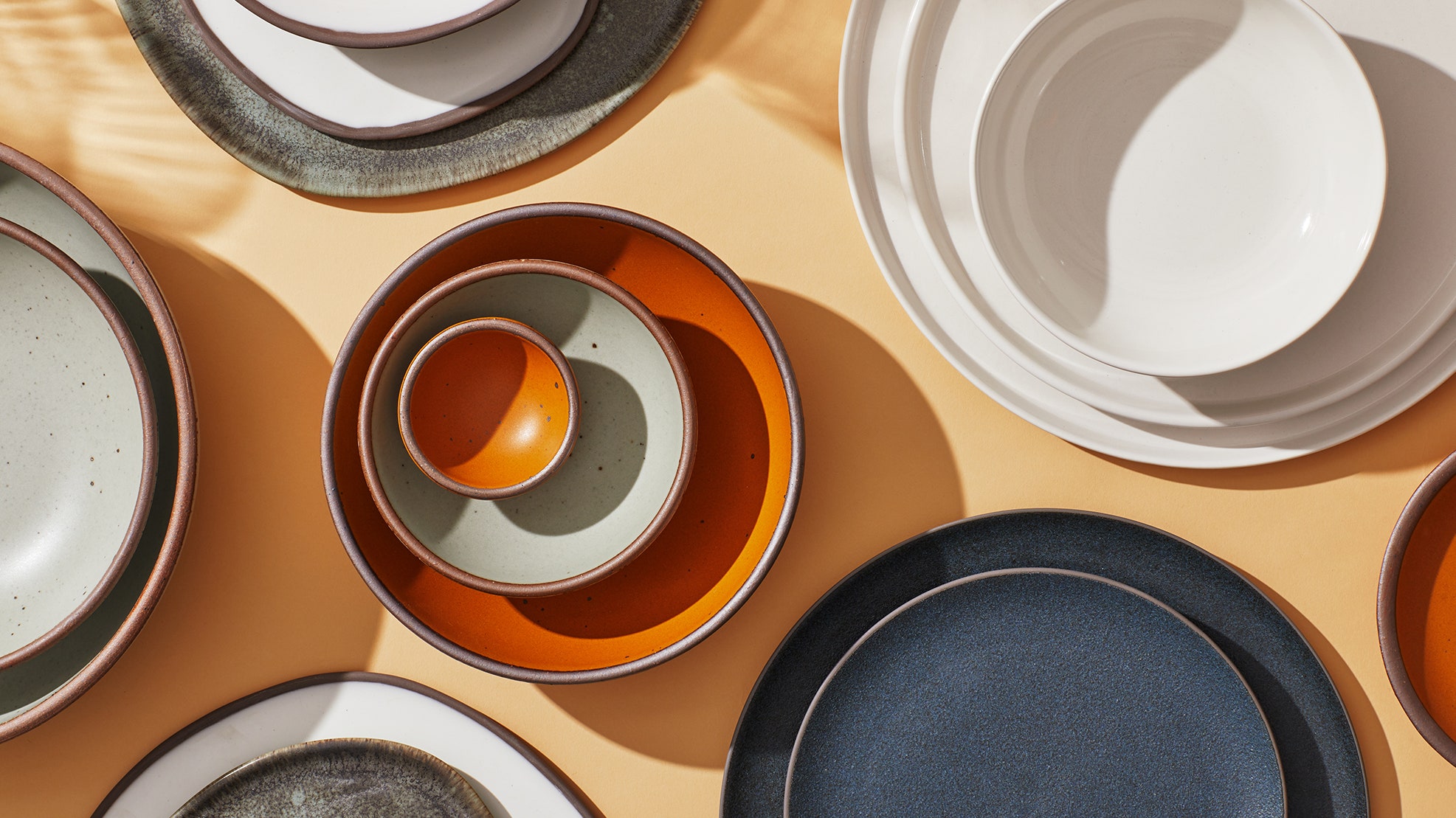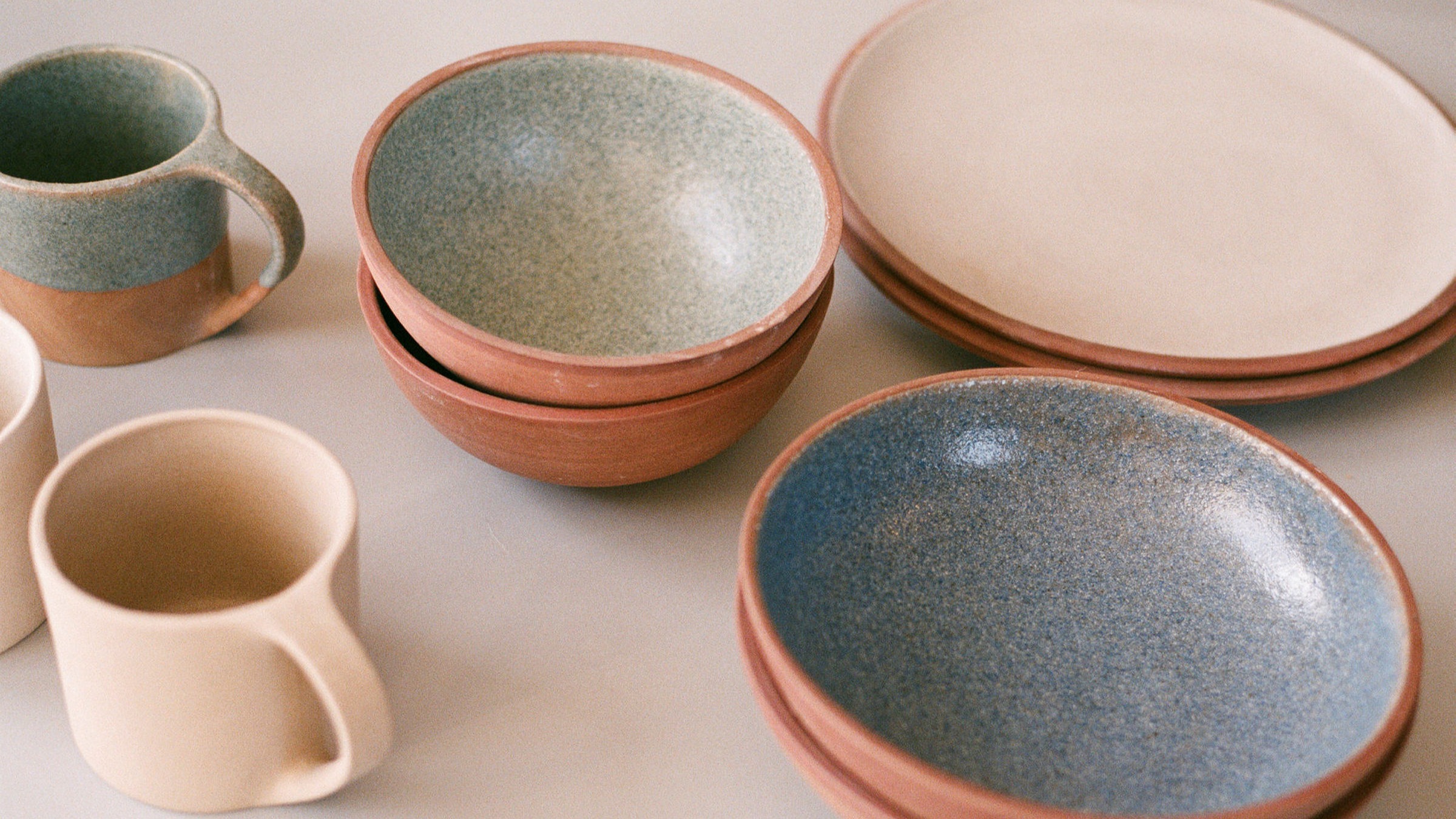How do other types of dishes differ from ceramic devices? Those, most often used for serving the table, for cooking much less often. Ceramic dishes are often found in the kitchens of cafe and restaurant chefs.
What are its advantages? Due to the material from which ceramic dishes are made, it is able to maintain the humidity and temperature of food. The devices can easily withstand cooking in ovens.

Among the minuses, one can note sufficient fragility.
Types of ceramic dishes:
- pots;
- backs;
- serving plates;
- devices for serving spices;
- molds for baking;
- salad bowls;
- cream cakes;
- teapots;
- cups;
- coffee makers.
GLASSWARE
Dishes, which are heat-resistant, withstand temperatures on average from 40 ° C to 300 ° C. Due to this, it can be safely used in the oven and microwave oven, refrigerator and freezer. Manufacturers supply the market with heat-resistant devices that are designed for cooking on stoves (gas or electric).
Other types of dishes differ from this one in that they are ecological, hygienic and safe for humans. Among the disadvantages, it can be noted that such devices are not durable. Under strong mechanical influences, any dish will be severely deformed: it will burst or break.
It is difficult to count how many and what dishes there are in the modern world. And how many classifications have been invented for it: by purpose, by material, by shape, by size, by color, by style, by the method of heat treatment, by the method of decoration, by completeness, etc. It is unlikely that we, ordinary housewives, need to know all these nuances, but some of them will be useful. Therefore, all dishes can be divided according to their purpose and the materials from which they are made.
TYPES OF TABLEWARE ACCORDING TO PURPOSE
Cookware. These are the usual pots, pans, casseroles, pots, pans … in general, all the utensils in which food can be prepared.
Utensils for storage. These are containers, glass jars and bottles, containers for cereals made of various materials.
Tableware. This is all the dishes that serve tables and in which meals are served. This is the largest class of dishes, in which you can distinguish your own subclasses, for example, teaware, coffeeware, for wine and vodka products, cutlery …

TYPES OF TABLEWARE BY MATERIAL
Kitchenware is made of materials that have good thermal conductivity. The main materials for such dishes are various metals.
Aluminum dishes. Aluminum has the most good thermal conductivity, but it is not very useful for our health, so now all dishes made of this metal are made with a non-stick coating, which excludes metal contact with food. The thicker the bottom of such a dish, the better its quality.
Enamelware. These are dishes made of cast iron or black steel, covered in 2-3 layers with a vitreous enamel coating. Such a coating is resistant to both acids and alkalis, so you can not only cook food in such dishes, but also store it.
Cast iron dishes. Probably the most durable type of tableware. Having a low thermal conductivity, but a high heat capacity, cast iron cookware can heat up to very high temperatures and retain heat for a long time, which is important for cooking some dishes. It is not for nothing that some housewives still keep a cast-iron frying pan in the house for cooking pancakes and a cast-iron goose pot – ideal dishes for long-cooking dishes. The main disadvantage of such dishes is the possibility of rust if they are left wet.
Copper and brass dishes. Copper cookware was once very common. Until now, in some houses you can find copper basins with a long handle for cooking jam. The hostesses of these houses can be understood, because copper has the highest thermal conductivity, which allows jam to be cooked faster and eliminates the possibility of its burning. But, unfortunately, copper, as well as aluminum, interacts with alkalis and acids from food, which makes copper utensils not the most useful, at least for humans.
Less harmful and harder is an alloy of copper with zinc – brass dishes. But, while still being harmful, such dishes lose significantly in terms of thermal conductivity. Therefore, in our time, you can find only Turks for brewing coffee and samovars made of copper and brass. But both copper and brass are still used for the production of kitchen utensils, but in combination with stainless steel. Thus, steels give her insufficient positive qualities of these metals.
Stainless steel dishes. Such dishes are hygienic, resistant to the effects of acids and alkalis even at high temperatures. But it has one drawback – very low thermal conductivity. This means that kitchen utensils made of pure stainless steel slowly transfer heat from the stove to the house and distribute it unevenly on the bottom. Hence the constant burning of food.
Copper and aluminum helped solve this problem. Since 1990, stainless steel dishes with a double, and even a triple, bottom have been produced. That is, one layer of aluminum or copper is placed between two layers of stainless steel. This made it possible to preserve all the advantages of stainless steel dishes and supplement them with the properties of high heat-conducting metals. Dishes with such a bottom retain heat for a long time, do not burn and do not enter into chemical reactions with the food being prepared.
Ceramic dishes. This cookware has a very low thermal conductivity, which makes it completely unsuitable for use on hobs. However, it does not react with any food, does not burn and is easy to wash. These dishes have no equal for cooking in ovens and microwave ovens. Thanks to its ability to absorb water, and then (when cooking) to gradually release it, food in such dishes acquires the most exquisite taste.
Dishes made of fire-resistant glass. Such dishes are used for cooking, both on the stove and in the microwave. Thanks to its transparency, it is easy to monitor the cooking process. And being chemically inert, such dishes do not change the taste of food.
Dishes made of heat-resistant porcelain and earthenware. This dish is still a novelty on the kitchen tableware market. Its properties are very similar to ceramic dishes, but unlike it, it can be used for cooking on gas and electric stoves.
Tableware made of titanium. As kitchenware, it is rarely found, mainly as pans and cauldrons. This is due to the fact that titanium is more expensive than aluminum or steel, and it does not have any special advantages over them.
Any woman feels like a housewife in the kitchen, and she will probably be surprised if someone shares with her information about the variety of types of dishes used every day in our perishable world. The signs of its classification are different: size, style, purpose, color, etc. In this article, we will try to cover the immeasurable and present you with the most frequently used types of kitchen accessories and explain their purpose.
Different dishes are used for different kitchen processes. The material from which it is made is also of great importance. For example, ceramics have nothing to do with cooking, they are only used to set the table.
What are dishes?
Dishes are kitchen utensils that are used to prepare, store and eat food. Conventionally, it can be divided into several groups: for processing, serving, and containers for storing food for a long time.
In our time, the types of kitchen appliances and utensils used abound in such an area that it is difficult to imagine that ordinary clay and even wooden cups, bowls and spoons served as the progenitors of all this diversity. A little later, the assortment of kitchen utensils was supplemented with aluminum pots and cast iron pans. With the passage of time and changing tastes, the tableware also changed, adding more and more new appliances and devices to our table.
types of dishes
The historical process of the division of nations became the reason for the emergence of specific, and peculiar only to certain nationalities, taste preferences. Such a concept as national cuisine appeared. Each country has its own way of life, its own recipes for cooking and, accordingly, specific utensils for preparing and eating food.
Based on the generally accepted classification, dishes are:
- kitchen;
- dining room;
To preserve cooked food.
